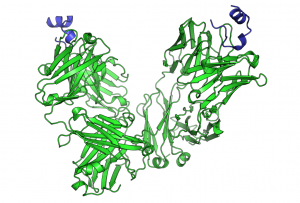 HHJ Brian Rawlings on 15thMay 2018 handed down judgement in this case. Michael Kent QC and Peter Houghton instructed by Plexus appeared for the Claimant; Charles Feeny, instructed by Hill Dickinson appeared for the Defendant. Mr Merritt worked for a painting and decorating company (Alick Whittle Limited) between 1975 and 1985, during which time he was exposed to asbestos and subsequently developed Mesothelioma. RSA provided employers’ liability insurance during the last 6 months of his employment, and thereby, by virtue of the Compensation Act 2006, were liable for the whole of his claim. As they were unable to locate any of the other insurers when Mr Merritt first brought his claim, RSA settled for a figure net of already paid benefits (£23,660.60 paid to CRU) of £124,255.40 plus £25,825.85 legal costs. Once the employers liability insurance tracing office was set up RSA were able to trace two other insurers that provided policies during the relevant employment period, and they sought “equitable contribution” from both. One, Aviva, provided this in line with the division of liability set out by RSA (corresponding to the percentage proportion of the total employment time) whereas the Defendant insurer refused to do so, claiming that their contribution claim was statute barred by Section 10 (1) Limitation Act 1980.
HHJ Brian Rawlings on 15thMay 2018 handed down judgement in this case. Michael Kent QC and Peter Houghton instructed by Plexus appeared for the Claimant; Charles Feeny, instructed by Hill Dickinson appeared for the Defendant. Mr Merritt worked for a painting and decorating company (Alick Whittle Limited) between 1975 and 1985, during which time he was exposed to asbestos and subsequently developed Mesothelioma. RSA provided employers’ liability insurance during the last 6 months of his employment, and thereby, by virtue of the Compensation Act 2006, were liable for the whole of his claim. As they were unable to locate any of the other insurers when Mr Merritt first brought his claim, RSA settled for a figure net of already paid benefits (£23,660.60 paid to CRU) of £124,255.40 plus £25,825.85 legal costs. Once the employers liability insurance tracing office was set up RSA were able to trace two other insurers that provided policies during the relevant employment period, and they sought “equitable contribution” from both. One, Aviva, provided this in line with the division of liability set out by RSA (corresponding to the percentage proportion of the total employment time) whereas the Defendant insurer refused to do so, claiming that their contribution claim was statute barred by Section 10 (1) Limitation Act 1980.
Key Issues:
HHJ Brian Rawlings set out the agreed position of the parties that: In order for Section 10 (1) Limitation Act (providing a two-year limit on claims, which was long passed in this case) to take effect, it was necessary to show that the claim RSA made against Generali was one covered by Section 1 (1) of the Civil Liability (Contribution) Act 1978. It was agreed by the parties that the answer was determined by the associated question of whether the indemnity provided by RSA to Alick Whittle Limited sounded in debt or damages.
This position is predicated on the Law Commission Report, which gave rise to the Civil Liability (Contribution) Act, which notes the following:
- At paragraph 28: “However, we criticised the equitable rules for being insufficiently flexible where the persons concerned were jointly liable in damages. Our point, and it won almost unanimous support, was that the 1935 Act improved on the common law not only by allowing contribution proceedings between tortfeasor’s but also by requiring the court to allow D2 to pay such contribution “as may be just and equitable having regard to that person’s responsibility for the damage”. The significance of this requirement is that where D2 is more to blame for the damage than D1 he may, under the 1935 Act, be ordered to pay more by way of contribution. Equitable rules on the other hand provide that the loss is to be shared equally between D1 and D2 even where D2 is more to blame than D1, unless the balance of responsibility is so heavily tipped against D2 that complete indemnity is justified. This would mean that, in contribution proceedings between persons jointly liable in damagesfor breach of contract, the courts power to divide the damages justly and equitably, having regard to the responsibility of each for the damage, would no longer be fettered by the existing rules.” (emphasis added)
- At paragraph 29: “It has been said that the existing rules can work unfairly in contribution proceedings between persons jointly liable for the same debt, for example between persons liable as partners, joint tenants or joint guarantors. The existing rules generally result in persons who are equally liable having to bear an equal share, without regard to the part they played in incurring the debt or the benefit, if any, that they derived under the agreement…. Our conclusion, so far as joint debtsare concerned, is that it is more important that the rule should be reasonably certain than that the court should have a wide discretion to redistribute the burden of each and every joint debt according to the general merits of the particular case. We accordingly make no recommendationfor changing the existing law of contribution as it applies to joint debts.” (emphasis added)
This issue was considered obiter by two Supreme Court judges, Lords Mance and Sumption in International Energy Group Limited v Zürich Insurance UK Branch[fusion_builder_container hundred_percent=”yes” overflow=”visible”][fusion_builder_row][fusion_builder_column type=”1_1″ background_position=”left top” background_color=”” border_size=”” border_color=”” border_style=”solid” spacing=”yes” background_image=”” background_repeat=”no-repeat” padding=”” margin_top=”0px” margin_bottom=”0px” class=”” id=”” animation_type=”” animation_speed=”0.3″ animation_direction=”left” hide_on_mobile=”no” center_content=”no” min_height=”none”][2015] UKSC 33; who came to opposite conclusions.
Lord Mance refers to the works of Colinvaux & Mirkin’s[i]and Charles Mitchell[ii]noting that they “suggest that it turns on whether liability under an indemnity insurance is regarded as “the right to be indemnified by a payment of money” or is, under a view which the authors suggest that the cases favour, regarded as arising from breach of an undertaking to prevent the insured risk from materialising…” He goes on to state that “It suffices to say that, if insurance contract liabilities are viewed as sounding in damages, it appears somewhat surprising if the 1978 Act could operate as an alternative statutory remedy with different effect in a case of true double insurance in respect of post–commencement liabilities.”
Lord Sumption states that “A contract of indemnity gives rise to an action for unliquidated damages, arising from the failure of the indemnifier to prevent the indemnified person from suffering damage, for example in a liability policy by having to pay the third party claimant” and refers to the case of Firma C-Trade SA v Newcastle Protection and Indemnity Association[iii]as supporting this conclusion. He added that: “The class of persons “liable in respect of any damage suffered by another” [the requirement of Section 1(1) Civil Liability (Contribution) Act 1978] may include those liable in contract, and there is no reason to limit it to those who have themselves caused the damage, as opposed to those who have assumed a contractual liability in respect of it.”
It was also argued in the alternative for the Defendant that RSA should be put to proof on the reasonableness of the settlement.
Judgement:
HHJ Brian Rawlings made clear that he did not consider it necessary as such to choose between the positions of Lords Mance and Sumption as set out above. He considered the fact that the statements were obiter, and were expressly acknowledged by both judges not to be determinative. In light particularly of the lack of submissions and evidence on the point provided to them, he need not be bound by either position.
Instead he took the view that a number of cases referred to in Goff & Jones’ ‘The law of Unjust Enrichment’[iv]provided binding authority for the proposition that an indemnity provided by insurers sounds in damages rather than in debt. His consideration of the case law is summarised here:
In Farnley v Dominion Insurance Co Limited[v]Mr Justice Donaldson, at page 936 said “… All actions against insurers under an indemnity policy sound in unliquidated damages rather than debt (see Jabbour v Custodians of Israeli Absentee Property[1954] 1 WLR page 139, 143 seq. and the cases cited)”. HHJ Brian Rawlings noted from this both that Donaldson J confirmed that “all actions against insurers under indemnity policies sound in unliquidated damages rather than debt” and that it formed part of the ratio of his decision. He notes that the same is true of Mr Justice Donaldson in the case of Edmonds Lloyds italica & L’ Aancora Compagnia di Assicurazione e Riassicurazione S.P.A[vi]
In the Jabbour case referred to by Mr Justice Donaldson in Farnley: ‘an English insurance company agreed to indemnify the plaintiff against loss in relation to a garage owned by the plaintiff in Haifa. The garage was blown up in a riot and the plaintiff left Palestine and went to Egypt. Under emergency regulations passed in December 1948, a custodian was appointed to all property belonging to “absentees” who had gone inter alia to Egypt, requiring that such property be delivered up to the custodian. The question was whether the plaintiff or the custodian was entitled to a payment from the insurance company.’
Mr Justice Pearson said in that case that: “it is established by many decided cases that such a claim is a claim for unliquidated damages……But the word “Damages” is puzzling and seems to be used in a rather unusual sense, because the right to indemnity arises, not by reason of any wrongful act or omission on the part of insurer (who did not promise that the loss would not happen or that he would prevent it) but only under his promise to indemnify the insured in the event of a loss.… The explanation of the use of the expression “unliquidated damages” to describe a claim for an indemnity under an insurance policy may be wholly or partly afforded by the old form of pleading in assumpsit, alleging a breach by non—payment, as in Castelli’s v Boddington.” Mr Justice Pearson went on to note that the claim for an indemnity under an insurance policy cannot be the subject matter of a garnishee order but was a chose an action that could be assigned. Thereafter Pearson J proceeded upon the basis that the claim under the insurance policy was a chose in action and not a debt, in determining the case.
HHJ Brian Rawlings notes thereby that “[w]hilst Pearson J did describe the use of the word “damages”, in connection with an insurers indemnity, as being used, in an unusual sense in that the indemnity did not, in his view, involve a promise by the insurer that the loss would not happen or that the insurer would prevent it, he nonetheless proceeded upon the basis, following the authorities to which he referred, that the claim was one in damages (a chose in action) and not in debt… However, in spite of that difference, in the analysis of the insurers promise, Pearson J’s judgement confirms that, based on the authorities to which he refers, the indemnity under an insurance contract is a Damages Indemnity Liability and not a Debt Indemnity Liability.”
The Judge thereby considered himself bound by the proposition that the liability of RSA to the Alick Whittle Limited is a liability sounding in damages rather than debt. It followed that RSA’s right of contribution from the Defendant falls within the Section 1 of 1978 Act (as agreed by the parties) and that it is therefore statute barred for the lapsing of the time limit in Section 10(1) of the Limitation Act 1980.
Though he acknowledged it was not strictly necessary to decide the point, he rejected the claim that RSA would have to be put to proof as to the reasonableness of their settlement with Mr Merritt for the following reasons:
- He considered that the position of Lord Mance in IEG that apportioned liability not equally among insurers (as is usual) but in line with the percentage of time of exposure – owing to the unique nature of a “Fairchild” claim of this sort – was not advocating a broader ‘equitable’ approach. Rather it was a constrained expansion of the normal rules to accord with the nature of the exceptional claim.
- He further stated that to permit such an expansion would produce highly undesirable uncertainty, which would lead to an increase in litigation as contribution would be disputed in almost every case of this kind.
KEY POINTS
On the basis of this judgment:
- Claims of contribution between insurers are subject to the Civil Liability (Contribution) Act and therefore a 2 year limitation period under Section 10 of the Limitation Act 1980.
- Claims will be assessed on a time exposed basis equivalent to that under Section 3 of the Compensation Act 2006.
 Charles Feeny comments
Charles Feeny comments
“The forms of action we have buried, but they still rule us from their graves.”
Maitland, the Forms of Action at Common Law (1909).
In this case, the essential question was a simple one; in a claim for contribution between insurers, should the limitation period be six years or two years from the date of judgment or settlement? Viewed as a simple question, there would be a very simple answer. That is that there is no justification for a period of longer than two years where the claim for contribution would have been known about and could have been brought prior to the judgment or settlement and where the Defendant will in the vast preponderance of cases be legally represented and most likely a corporate or insurer Defendant. To permit a period of six years in such circumstances would be an excessive indulgence inconsistent with the reasonable objective of promoting expedition in the resolution of legal disputes.
However, in answering this question, the Judge had to delve through much historical authority and in particular consider whether the claim for contribution was in debt or for damages, a distinction which is now almost entirely historic in the law. Whilst the Law Commission did decide that debt should not be brought under the Civil Liability (Contribution) Act 1978 because there was no justification for any judicial approach to apportionment of debt, there is no reason why such proceedings for contribution in debt should not equally have been subject to a two year limitation period.
The dangers of creating or protecting enclaves in the law were emphasised by Lord Rodger in Barker v Corus. Ironically, Lord Rodger had been one of the procreators of the best known example, the Fairchild enclave. Creating a special rule of causation to deal with the specific problem in mesothelioma claims inevitably created anomalies and tensions in analogous and related areas of the law. With hindsight, it might have been thought that the Court of Appeal’s approach, much derided at the time suggesting that the answer lay in statute, would have been the wiser course. Inevitably, further litigation followed from Fairchild and by the time of their decision in Sienkiewicz v Greif, the Supreme Court were in the words of one wry, if slightly unkind ,solicitor in danger of disappearing up their own enclave.
An enclave can be defined as “a place or group that is different in character from that which surrounds it.” In these circumstances, it is reasonable to consider that insurance law is something of an enclave. Again, rather than adopting simple and pragmatic solutions to issues arising in the current state of litigation, the courts have looked back into the history of insurance and sought to apply this in what has become an increasingly strained way. Whilst those steeped in insurance law no doubt have some great sentimental attachment to it and would not wish to see its more precious principles abandoned, the irony is that the ultimate outcome is very little different from that which would be achieved had a much more straightforward, indeed arguably simplistic, approach been taken. There is ultimately little difference between deciding what appears to be fair and reasonable in the current commercial context from relying upon the “broad principles of equity”. Similar comments could be made about litigation involving commercial contracts which centre upon detailed arguments about the construction of language which was probably not read by most of those involved in the formation of the contract and certainly not considered in the degree of detail which is thought appropriate for the purposes of resolving litigation. The digital world is creating a different commercial environment with an emphasis on speed and informality in business dealings. If the law is to be of value in this new commercial world, then the law itself will need to adapt and to offer the kind of swift and decisive problem solving which fits with the business practices of the litigants.
Download judgment
[i]Insurance contract law (loose leaf ed), para C-0643
[ii]Law of Contribution and Reimbursement (2003), paras 4.13 and 4.43-4.44
[iii][1991] AC 1, 34 (Lord Goff of Chieveley)
[iv]9th edition paragraph 19 – 34
[v][1969] 1 Lloyds reports page 502
[vi][1986] 1 WLR 402[/fusion_builder_column][/fusion_builder_row][/fusion_builder_container]





 The proposition that a defendant or insurer liable for terminal illness should pay reasonable treatment costs which have a prospect of improving the victim’s length or quality of life would appear to be an unlikely source of controversy. However, it is a testament to the enduring ability of mesothelioma claims to create forensic controversy that there is significant ongoing debate as to the best approach to a claim for immunotherapy costs.
The proposition that a defendant or insurer liable for terminal illness should pay reasonable treatment costs which have a prospect of improving the victim’s length or quality of life would appear to be an unlikely source of controversy. However, it is a testament to the enduring ability of mesothelioma claims to create forensic controversy that there is significant ongoing debate as to the best approach to a claim for immunotherapy costs. HHJ Brian Rawlings on 15thMay 2018
HHJ Brian Rawlings on 15thMay 2018  Charles Feeny comments
Charles Feeny comments

 Sir Robert Nelson on 18th September handed down judgement in this case. Claire Watson instructed by Irwin Mitchell LLP appeared for the Claimant; Charles Feeny, instructed by Bevan Brittan LLP appeared for the Defendant. XX attended smear tests administered by doctors working for the Defendant in 2008 and 2012, and subsequently attended biopsies in 2012 and 2013. Through negligence, the claimant’s cervical cancer was not detected on these occasions, and the consequently delayed treatment led to a number of seriously adverse effects. Some of these effects occurred whilst the cancer remained undiagnosed, and others as a direct result of the treatment. These effects are summarised at paragraph 18 of the judgement:
Sir Robert Nelson on 18th September handed down judgement in this case. Claire Watson instructed by Irwin Mitchell LLP appeared for the Claimant; Charles Feeny, instructed by Bevan Brittan LLP appeared for the Defendant. XX attended smear tests administered by doctors working for the Defendant in 2008 and 2012, and subsequently attended biopsies in 2012 and 2013. Through negligence, the claimant’s cervical cancer was not detected on these occasions, and the consequently delayed treatment led to a number of seriously adverse effects. Some of these effects occurred whilst the cancer remained undiagnosed, and others as a direct result of the treatment. These effects are summarised at paragraph 18 of the judgement: His Honour Judge Main QC on 11th May 2017 handed down judgement in this case at Manchester County Court. David Sandiford, instructed by Irwin Mitchell, appeared for the Claimant; Charles Feeney, instructed by Keoghs, appeared for the Defendant. At approximately 12.10 pm on 24th December 2013 Ms. Chloe Wheatcroft, the then 14-year old Claimant, was involved in a road traffic accident with a van driven by the Defendant Mr. Brine. The Claimant attempted to cross the road between two cars that were stationary in traffic at a set of lights. At the time of the collision, the Defendant was driving slowly to the right of the stationary cars, positioning himself to join the traffic preparing to turn right at the lights. Neither party noticed the other until the Claimant collided with the front left side of the vehicle. The left side of the vehicle features a retractable step for assisting with moving Mr. Brine’s disabled son into the vehicle, which protrudes approximately 2 inches from the side of the vehicle.
His Honour Judge Main QC on 11th May 2017 handed down judgement in this case at Manchester County Court. David Sandiford, instructed by Irwin Mitchell, appeared for the Claimant; Charles Feeney, instructed by Keoghs, appeared for the Defendant. At approximately 12.10 pm on 24th December 2013 Ms. Chloe Wheatcroft, the then 14-year old Claimant, was involved in a road traffic accident with a van driven by the Defendant Mr. Brine. The Claimant attempted to cross the road between two cars that were stationary in traffic at a set of lights. At the time of the collision, the Defendant was driving slowly to the right of the stationary cars, positioning himself to join the traffic preparing to turn right at the lights. Neither party noticed the other until the Claimant collided with the front left side of the vehicle. The left side of the vehicle features a retractable step for assisting with moving Mr. Brine’s disabled son into the vehicle, which protrudes approximately 2 inches from the side of the vehicle.